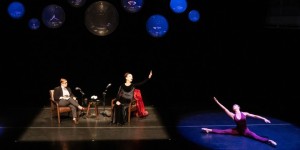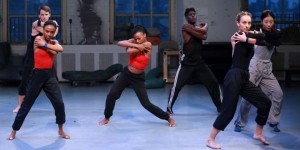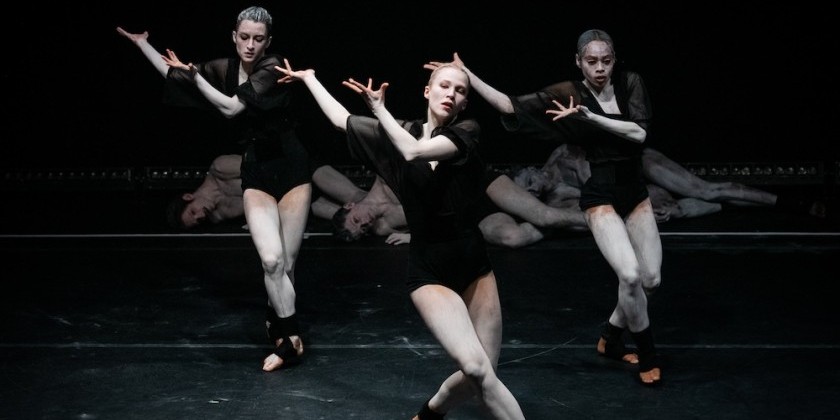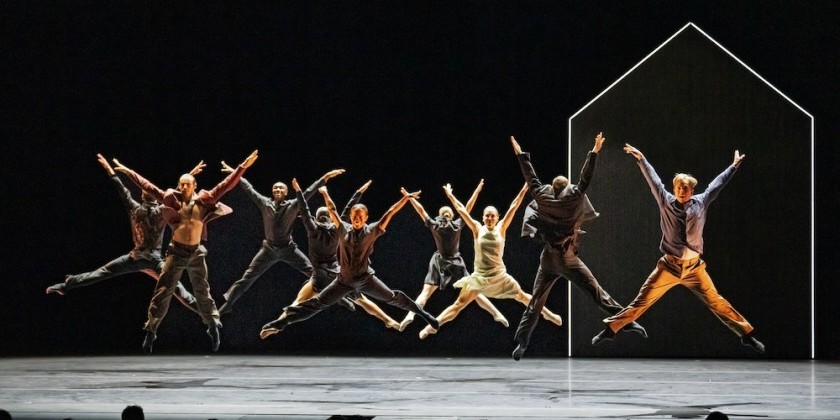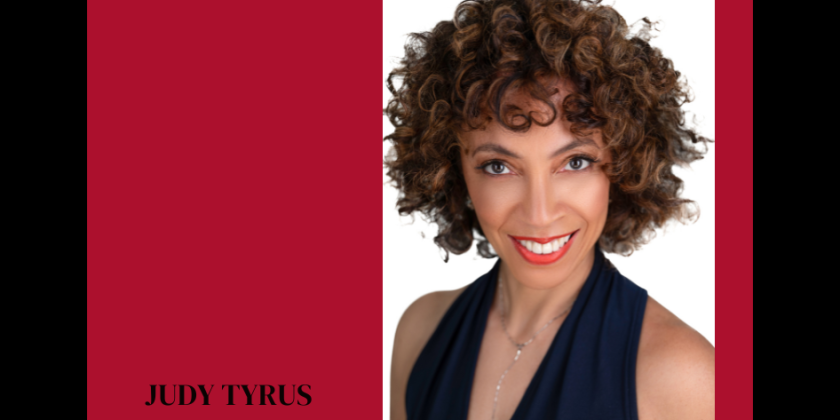ARTISTS ACTIVATED: Catherine Cabeen/Hyphen Presents the World Premiere of "Give Me More" at The Theater for the New City
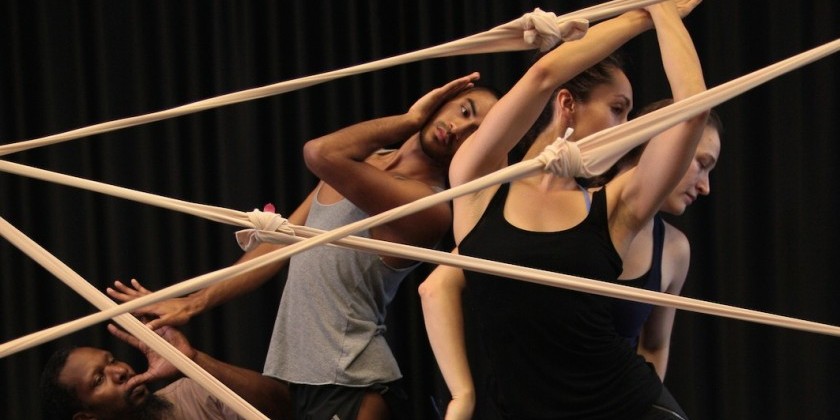
PLUS: GIVE ME MORE Cabeen - From Dancing For Trees to Freedom In Drag - Five Fascinating Facets of Catherine Cabeen
ARTISTS ACTIVATED: Catherine Cabeen/Hyphen Presents the World Premiere of Give Me More
An Evening-Length Work in Three Parts
At the Theater for the New City on 155 First Avenue, in Manhattan
January 25–27, 2018
Ticket Info: SMARTTIX
As I write, women across our nation and around the world, are marching — taking to the streets in solidarity for equal pay, equal rights, and to encourage more women to vote and run for office. They are stepping out in support of immigrants, particularly, Deferred Action for Childhood Arrivals (DACA); Black Lives Matter; and the recent #metoo #timesup movements that are finally bringing to light systemic sexual abuse that has existed in the work place for decades, more than decades really.
Our dance community has been rocked by the self-imposed departure of Peter Martins as director of the New York City Ballet as allegations of his sexual harassment and bullying of dancers are being investigated. We had been talking (and continue to) about race in dance, with such questions as, “After all these years, decades past the civil rights movement, why is there only one black prima ballerina in a company called the American Ballet Theatre? How can our arts organizations more fully reflect and appreciate the diversity that is our nation?”
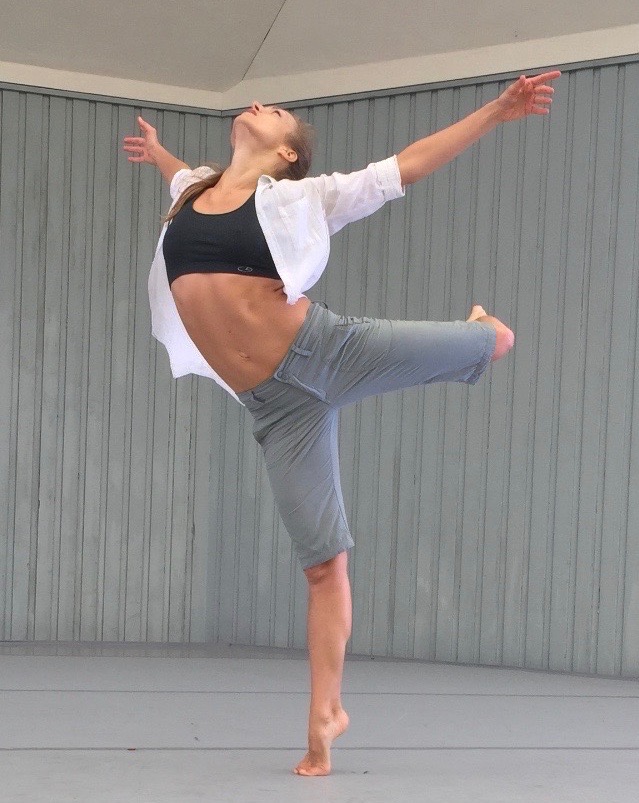
Whether speaking about bullying, sexual abuse, racial inequity, gender, immigration or the environment, one can feel the desire of the dance community to be involved and seen. They are calling out concerns of our time by embodying them theatrically, imploring audiences to action, recognition, healing, or maybe, in a manner that only the arts can, a new way of understanding.
Catherine Cabeen, an infinitely curious and engaged woman, is part of this artistic movement. Passionate about digging into world issues, she challenges herself as professor, choreographer, and dancer to dynamically add her voice to larger discussions. Give Me More, her latest work, was partly inspired by a 2015 lecture she attended on the United Nations’ shifting point of view regarding addressing world goals.
Nikhil Seth, the executive director of the United Nations’ Institute for Training and Research, described the transition to a more integrated approach in his talk. For advances in human and planetary welfare to be achievable, the UN found it more effective to view goals holistically, as part a web of interrelated needs, instead of seeing these goals as addressing stand-alone, isolated issues. Cabeen’s imagination and intellect sparked. Research began.

Today 200 pounds of donated clothing — yes, that’s 200 pounds of discarded scraps donated by the fashion industry and Cabeen’s students at Marymount Manhattan College — form a continuous web of interrelated parts that has become an integral prop for her company to navigate. Cabeen found the clothes to be loaded with issues that she is interested in diving into: gender, class, age, consumerism, and desire, being a few. Says Cabeen, “I got excited about the idea of collecting recycled clothing and stitching it together, and what that said about connectivity.”
Her rich personal dance history, moving from training in the Graham technique to post-modern work with Bill T. Jones, performing with the Martha Graham Dance Company, then working, with Richard Move on The Show (Achilles Heels) and Martha@… series, has provided Cabeen with exceptional insight and appreciation of the obstacles and possibilities in dance. In Give Me More, Cabeen takes on the dance establishment while performing in drag, as a character called THE DUDE: “He is everything I never want to be, and quite frankly, he is everything that is so common in the dance world. I am trying to push this performance over the top in order to make visible a level of misogyny and emotional abuse that I think is so pervasive, so common, that it’s almost invisible."
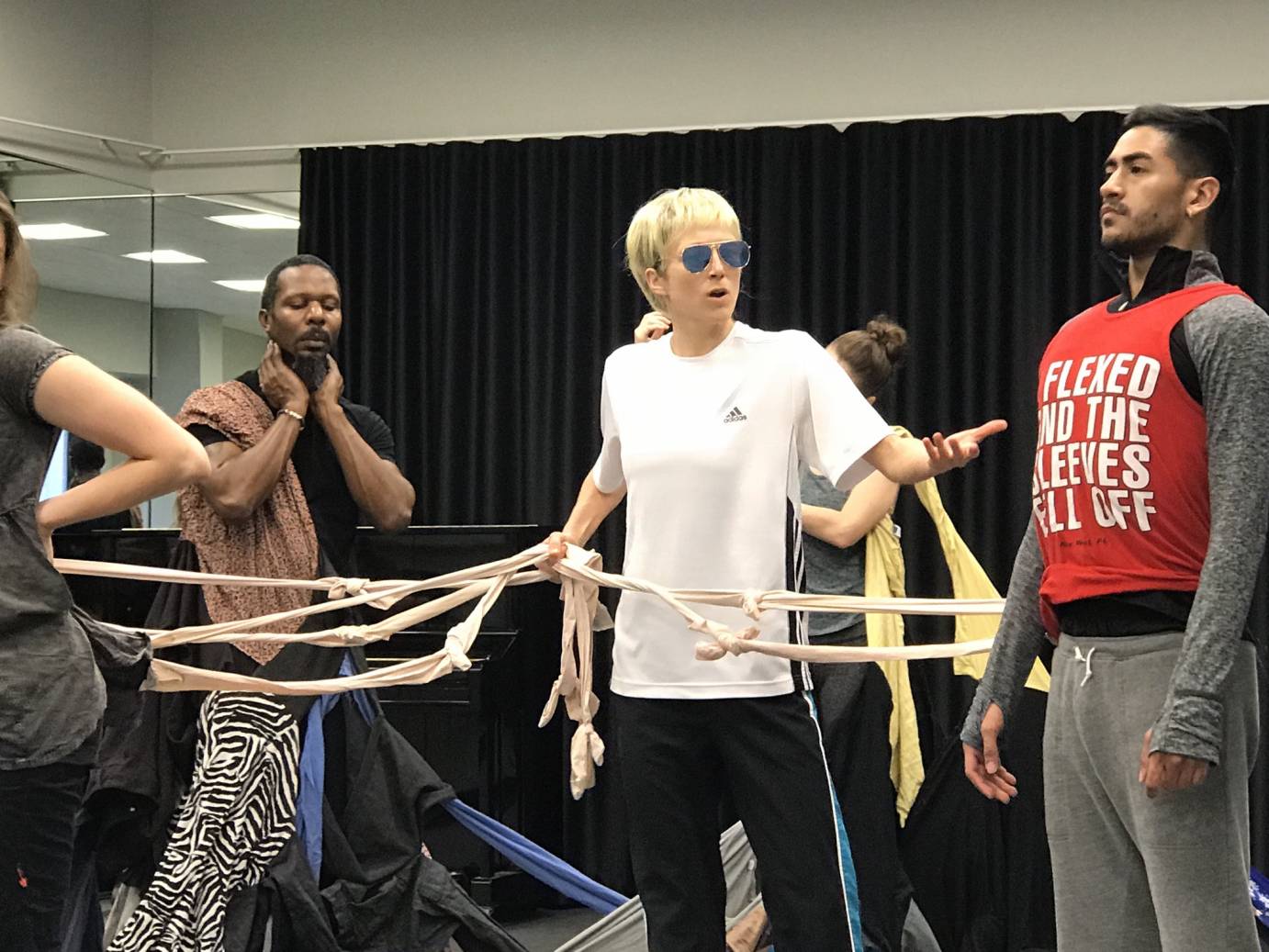
"I just love dancing, but I find formal dance training comes at a cost, particularly to young women. It tends to create docile bodies. They are quiet. They have been looking in the mirror so often they are more aware of their every fault than anyone. Do they really have any faults? Classical training can breed painful insecurities. As a teacher, I wonder, how else can we create excellence?”
So the discussion begins.
**BONUS MATERIAL - Five Fascinating Facets of Catherine Cabeen - From Dancing for Trees to Freedom in Drag
Engaging With The World Through Dance 101
I have been making my own work since I was seven — in my living room — to Andrew Llloyd Weber recordings. I grew up in Illinois and I used to do all of my performances of my own choreography in the backyard because there was a line of trees on the property. In my mind they were giving me a standing ovation for everything I did.
I don’t remember the movement, but I remember being outside, and the act of generosity of moving in nature. Even though no one was actually watching, I felt this generous communion with the world.
Martha Graham, Makeup, and Speaking Up
I fell in love with the Graham technique at age 15. It allowed me to embody my teen angst. I studied assertively until I was 19, then was hired by Bill (T. Jones) and didn’t touch the work again until I was 28. (When she was chosen to dance for the company, working for almost a year, 2005-2006 season, until she left due to an injury.)
I am honored to have been part of that work, but to be perfectly honest, while I LOVE Graham technique and the mythology of Martha Graham, I am not into the intense artifice of the makeup and the costumes and the very specific ideas of femininity and masculinity that are part of that work.
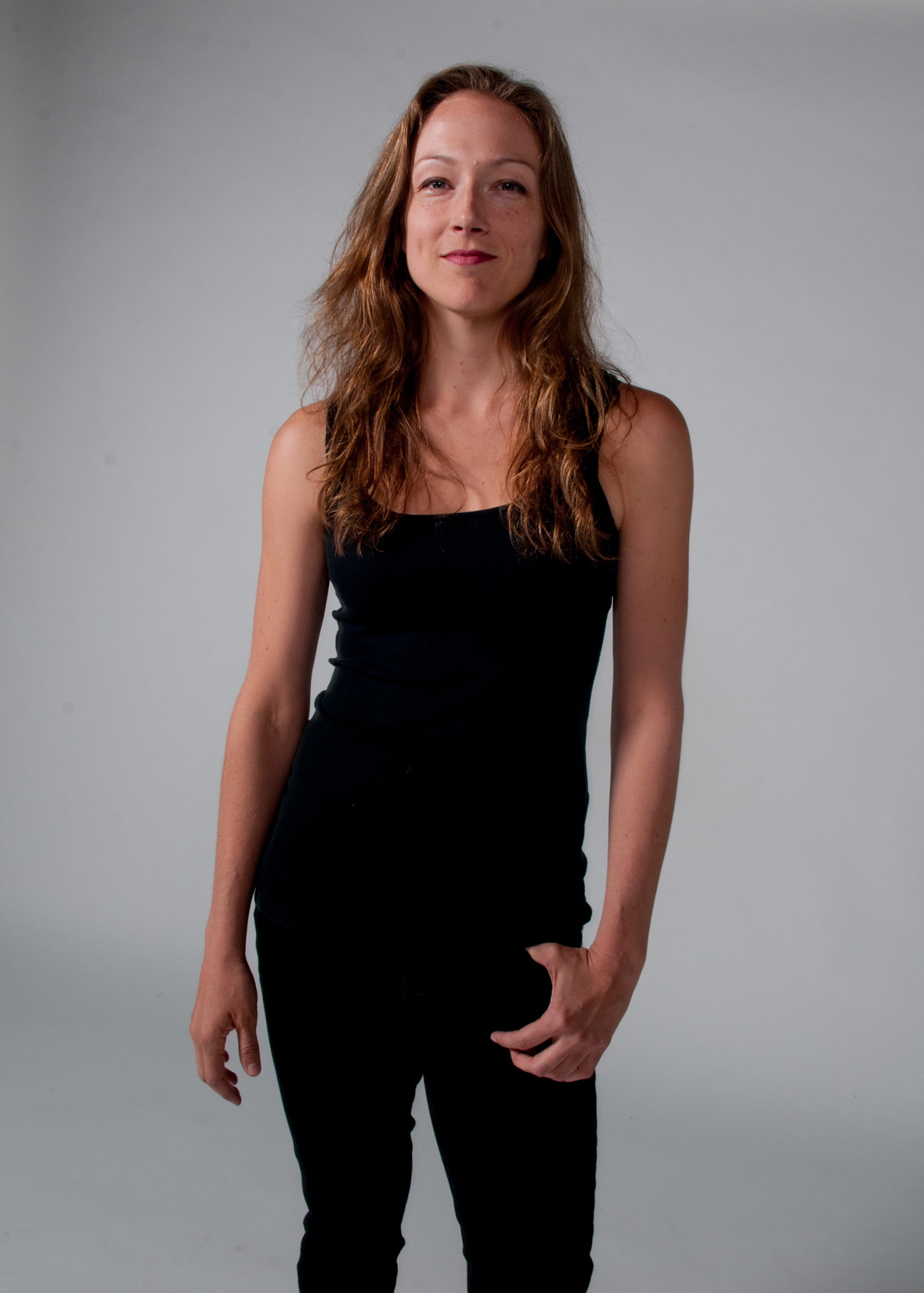
I am about as comfortable as I get as a dancer in a Graham class, but I was uncomfortable as I have ever been as a dancer in that company. I was constantly told I was too tall, my shoulders were too broad, and I wasn’t wearing enough makeup to rehearsal. In fact, there is a line in Give Me More where I tell one of the dancers that she is not wearing enough makeup. That was said to me. I think the direct line was, “There are three levels of makeup in this company, performance, lecture demonstration, and rehearsal.”
I went from Bill’s world (where she danced for seven years) where I was celebrated for being tall, tough, and having broad shoulders, to Martha Graham’s world where I was too tall, too broad, and too loud. I talked back to the rehearsal directors, and you could hear a pin drop — you know, you don’t do that.
Bill T. Jones and Empowerment
Having my first performance experience with Bill T. Jones was not only empowering because he cares about what his dancers think, but what’s really interesting about Bill is, he knows who he is.
Bill knows and understands masculinity. He also understands politics and how power dynamics flow — and formal beauty as well. He never ever tried to tell me what would make me powerful. He would set up a scenario and ask, “How are you going to stand up with in it?”
Gender Stereotypes in Choreography
What I’ve seen a few too many times are male choreographers who are making work about the power of woman and do it by saying that power is a mini-skirt and lipstick — her ability to seduce men. I find it heinously offensive every time I am in the audience. I also see female choreographers making that same work. . . so it’s not as simple as the gender binary.
We are so culturally conditioned to view power as one thing — masculine. It doesn’t give us space to actually express power in other ways. It doesn’t give all of us — not just women — the opportunity to express power in other ways.
Of course, this dynamic exists in the world as a whole, but in the dance world, its literally amplified with a a spotlight.
The Freedom of Drag and Coming Full Circle
My masters thesis (University of Washington) pivoted around a moment that I had in the dressing room with Richard Move as we were getting ready to do our two-person show where he’s Martha Graham. He was putting on his drag as Martha, and as we were sitting next to each other, I looked at myself in the mirror and all of the sudden realized, I am putting on my drag as Martha.
It’s all drag, all of it.
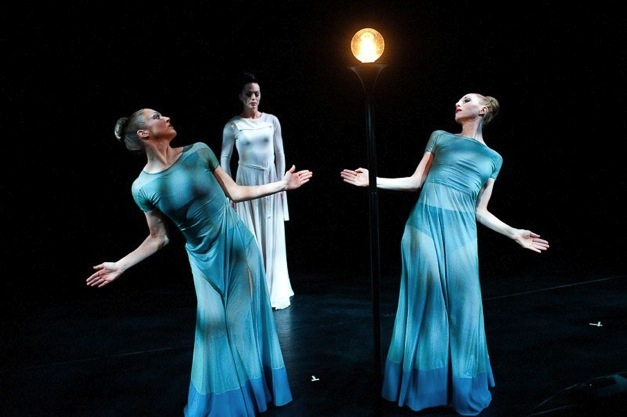
Dancing in the Graham company it felt like the message was, “You are not enough as you are.” You have to put all of this stuff on, and it felt offensive. But with Richard it was fun. Suddenly I was able to see Graham’s aesthetic as a choice and theatrical opportunity as opposed to something that was telling me I wasn’t enough of a woman.
Drag performance helped me to understand Martha’s work, really allow myself to love it, and let go of being offended. I am a Graham teacher now, and I always tell my students that most of my Graham experience is with a drag queen.
The Dance Enthusiast Interviews Dance Artists and Creates Conversation.
For more Behind the Scenes Stories of Dance Click on to our Day In The Life of Dance Section




